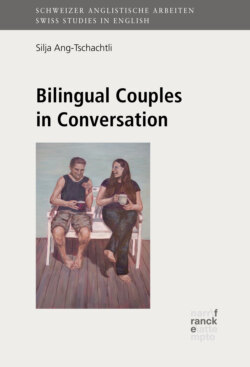Читать книгу Bilingual Couples in Conversation - Silja Ang-Tschachtli - Страница 24
3.3 Bilingualbilingualcouples couples: Background and challengeschallengeslinguistic 3.3.1 A word on bilingualism
ОглавлениеBilingualismbilingualism has been defined as “the regular use of two or more languages” (Grosjean 1982: 10), although it can also be defined based on competence in the second languagesecond language (L2). For individuals, I use the term bilingualbilingualindividuals to refer to the ability to speak two languages, which requires a certain level of proficiency and presupposes at least occasional use. When referring to bilingual couples, as opposed to bilingual individuals, I use the term to indicate that the partners have different mother tongues, regardless of both partners’ level of proficiency. Thus, bilingual couples may not communicate in two languages with each other; instead, they may often speak one main couple language. This also means that, in theory, one of the partners might not actually be bilingual, despite being in a bilingual relationship. Moreover, it should be noted that, technically, many of the participants in this study are not just bilingual, but multilingualmultilingual. Since my research only focuses on the two languages in which they are most fluent — their mother tongue and their partners’ L1first language — I will refer to them as bilinguals, and to their partners’ language as their L2, even if for some, this may not be the language which they acquired second. In contexts where I refer to any language (or several languages) other than a speaker’s L1 (and not specifically his or her partner’s language), I use the term LXLX.
